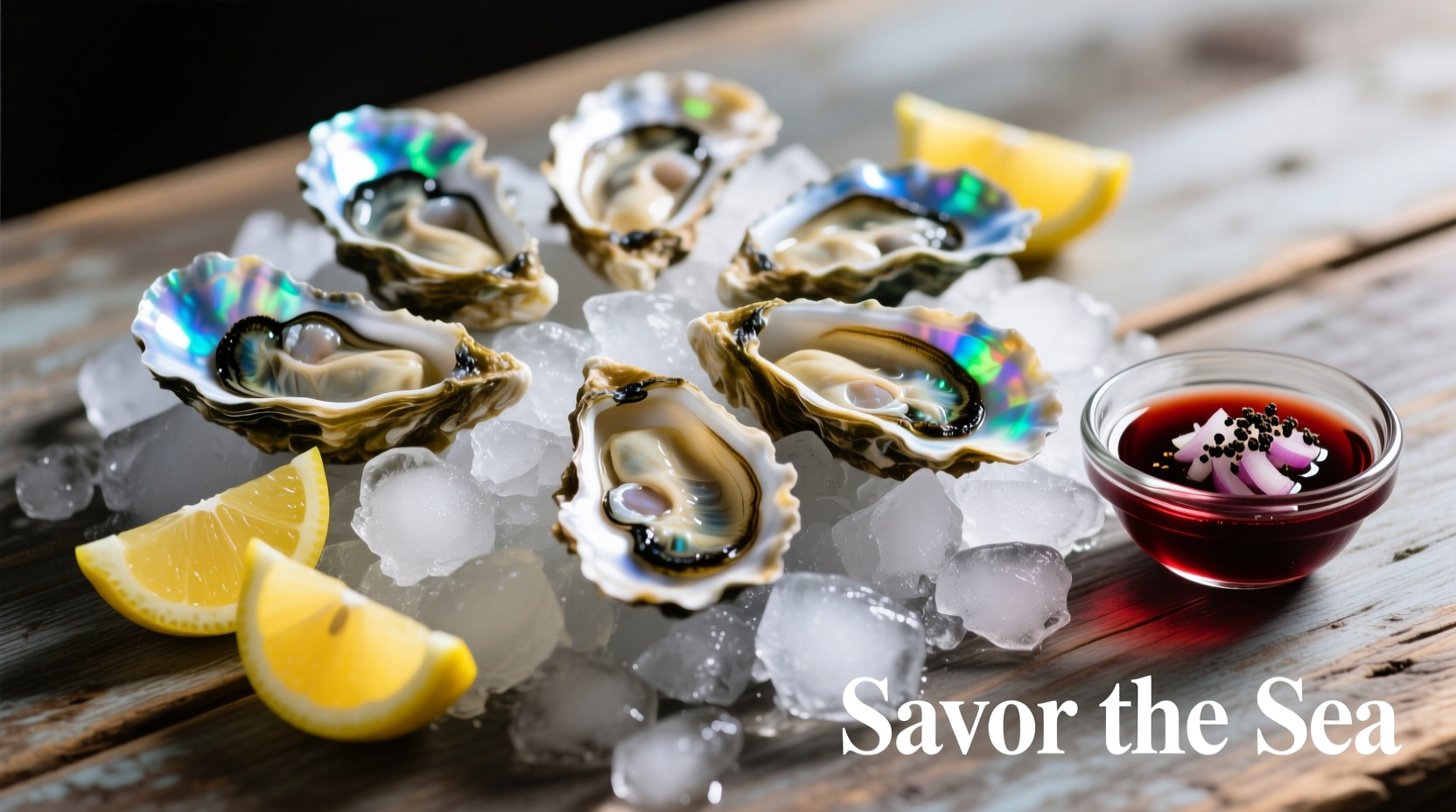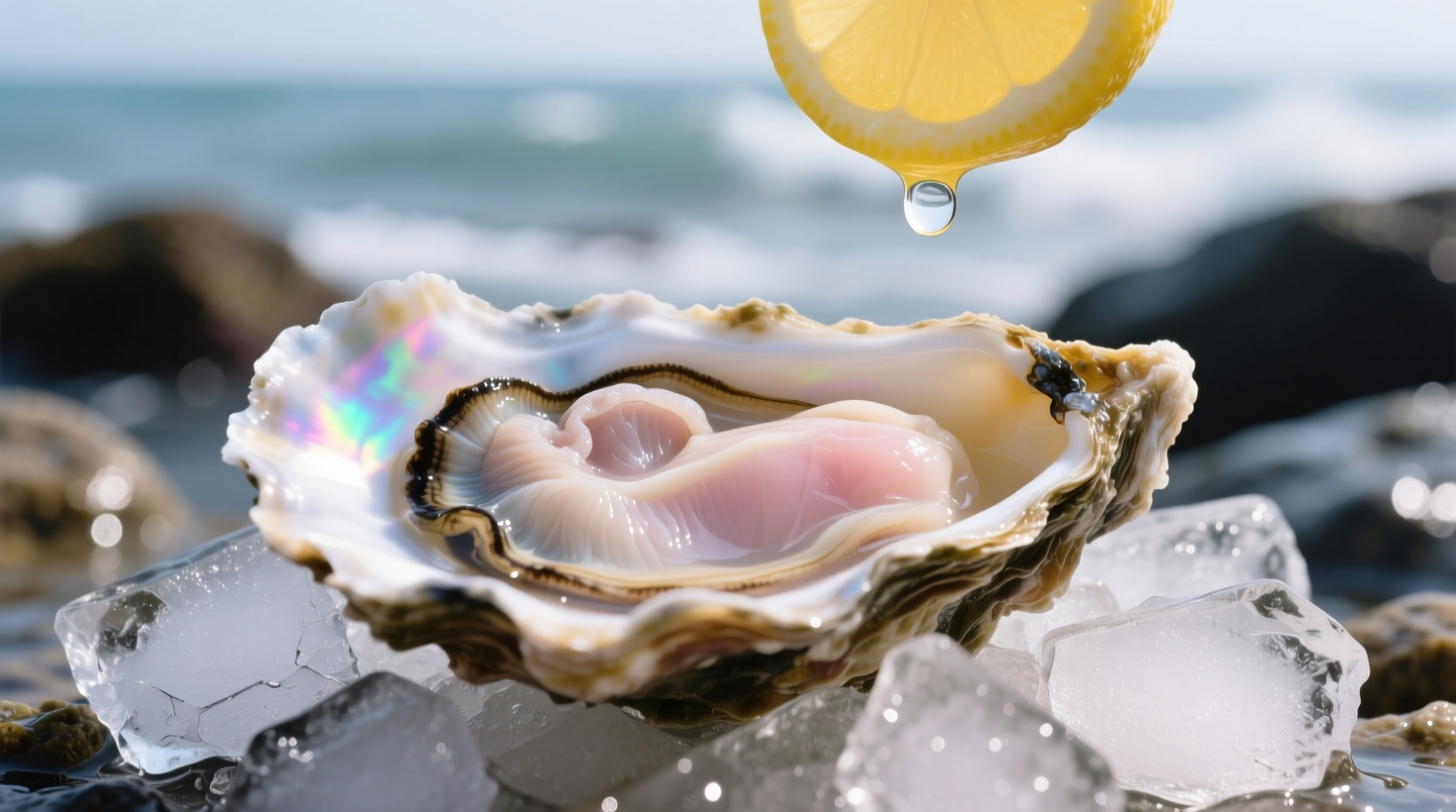Understanding oyster flavor profiles isn't just about "does it taste fishy?"—it's a complex sensory experience that connects you directly to the waters where they grew. Whether you're a first-time oyster eater or a seasoned shellfish enthusiast, knowing what to expect can transform your experience from "why would anyone eat this?" to "I need to try every variety."
The Essential Oyster Flavor Framework
Forget the myth that all oysters taste the same. These bivalves are nature's flavor translators, converting their marine environment into distinctive taste profiles. The "merroir" (like terroir for wine) of their growing waters creates remarkable flavor diversity. Here's what actually happens when an oyster meets your palate:
| Flavor Component | What You'll Experience | Common in These Varieties |
|---|---|---|
| Brininess | Saline freshness like ocean mist, not fishy saltiness | East Coast (Wellfleet, Blue Point) |
| Sweetness | Cucumber, melon, or even watermelon notes | West Coast (Kumamoto, Olympia) |
| Metallic Notes | Copper or iron undertones (natural, not contamination) | European Flat (Belon) |
| Creaminess | Buttery texture with mushroom or mineral finish | Gulf Coast (Gillardeau) |
According to NOAA's marine biology research, oysters filter up to 50 gallons of water daily, absorbing microscopic plankton and minerals that directly influence their flavor chemistry. This explains why two oysters from different bays—even within the same region—can taste dramatically different.
Your First Oyster: What to Expect
If you've never tried an oyster, your brain might be screaming "raw seafood?" before you even take a bite. Here's exactly what happens when you do:
The texture surprise: Contrary to expectations, quality oysters aren't slimy. They have a firm yet yielding texture—like the perfect al dente pasta—surrounded by a clean, clear liquor (the natural seawater inside the shell). When properly shucked, they should feel springy, not mushy.
The temperature factor: Never eat room-temperature oysters. The ideal serving temperature (34-40°F/1-4°C) preserves their delicate flavor compounds. Warmer oysters develop stronger metallic notes that overwhelm the subtle sweetness.
The flavor progression: Take a moment to experience the full flavor arc:
- The initial hit: Clean salinity that coats your tongue
- The mid-palate: Distinctive notes emerge (cucumber, melon, or mushroom)
- The finish: Either a clean mineral fade or lingering sweetness
"The best oysters taste like the ocean smiled at you," explains Chef Thomas Keller in his seafood masterclass. "Not fishy, not metallic, but the pure essence of clean, cold seawater with subtle sweetness."

Why Oysters Taste Different: The Science Behind Merroir
Merroir isn't just chef jargon—it's measurable science. The University of Washington's School of Aquatic and Fishery Sciences confirms that water chemistry directly impacts oyster flavor through three key factors:
- Salinity levels: Higher salinity creates more pronounced brininess
- Plankton varieties: Different microalgae create distinct flavor compounds
- Mineral content: Calcium-rich waters produce harder shells and creamier meat
This explains why East Coast oysters (like Wellfleet from Massachusetts) deliver that classic crisp, briny punch with copper notes, while West Coast varieties (such as Kumamotos from Washington) offer buttery sweetness with cucumber undertones. European Flats (Belons from France) present that distinctive metallic finish prized by connoisseurs.
How Preparation Changes Everything
What you do with an oyster after shucking dramatically affects its flavor profile. The Monterey Bay Aquarium's Seafood Watch program notes that preparation methods can either enhance or mask natural flavors:
- Raw with lemon: Brightens flavors but can overwhelm delicate notes
- Mignonette (vinegar-shallot sauce): Complements brininess without masking it
- Hot sauce: Works best with stronger-flavored oysters (Gulf varieties)
- Grilled ("Oysters Rockefeller"): Transforms flavor through caramelization
Professional chefs universally agree: never drown oysters in cocktail sauce. As Antonio Bourdain noted, "Cocktail sauce is for people who don't want to taste the oyster." Start plain, then add minimal accompaniments to discover the oyster's true character.
How to Taste Oysters Like a Pro
Follow this simple tasting method used by oyster sommeliers to fully appreciate each variety:
- Examine the liquor: Clear liquid indicates freshness; cloudy suggests age
- Smell before eating: Should smell like a clean ocean breeze, not fishy
- Chew once: Releases flavor compounds better than swallowing whole
- Notice the finish: Quality oysters leave a clean, refreshing aftertaste
Seasonality matters too. The American Fisheries Society confirms that oysters taste best in months with an "R" (September-April) when they're not spawning. During summer spawning season, they become milky and less flavorful as energy goes toward reproduction.
Common Misconceptions About Oyster Flavor
Let's address some persistent myths that might be holding you back from enjoying oysters:
- "Oysters taste fishy": Properly handled oysters taste of clean ocean water, not fish. Fishiness indicates improper storage.
- "All oysters are slimy": Fresh oysters have a firm, springy texture—not slimy.
- "You need to chew them": One chew releases flavor; swallowing whole misses key taste notes.
- "They all taste the same": Flavor differences between regions are as distinct as wine varietals.
Remember: oysters don't actually have a strong inherent flavor—they're delicate canvases that reflect their environment. This is why the same variety grown in different waters can taste completely different.
Frequently Asked Questions
Do oysters taste like the ocean?
Yes, but not in a fishy way. Quality oysters deliver a clean, briny freshness similar to ocean mist rather than seaweed or fish. The taste should be refreshing with subtle mineral notes, reflecting the purity of their growing waters.
Why do some oysters taste sweet while others are briny?
This variation comes from "merroir"—the water conditions where oysters grow. Higher salinity creates more brininess, while nutrient-rich waters with specific plankton varieties produce sweeter notes. East Coast oysters tend to be brinier, while West Coast varieties often have cucumber or melon-like sweetness.
Do all oysters have that metallic aftertaste?
No, metallic notes vary by variety. European Flats (like Belons) have distinctive copper notes, while many American varieties offer clean finishes with mushroom or mineral undertones. A strong metallic taste in non-Flat varieties may indicate poor water quality or improper handling.
How can I tell if an oyster has gone bad by taste?
Spoiled oysters taste distinctly off—ammonia-like, sour, or overly fishy rather than clean and briny. They may have a slimy texture instead of firm springiness. Fresh oysters should smell like a cool ocean breeze and taste of clean saltwater with subtle secondary notes.











 浙公网安备
33010002000092号
浙公网安备
33010002000092号 浙B2-20120091-4
浙B2-20120091-4